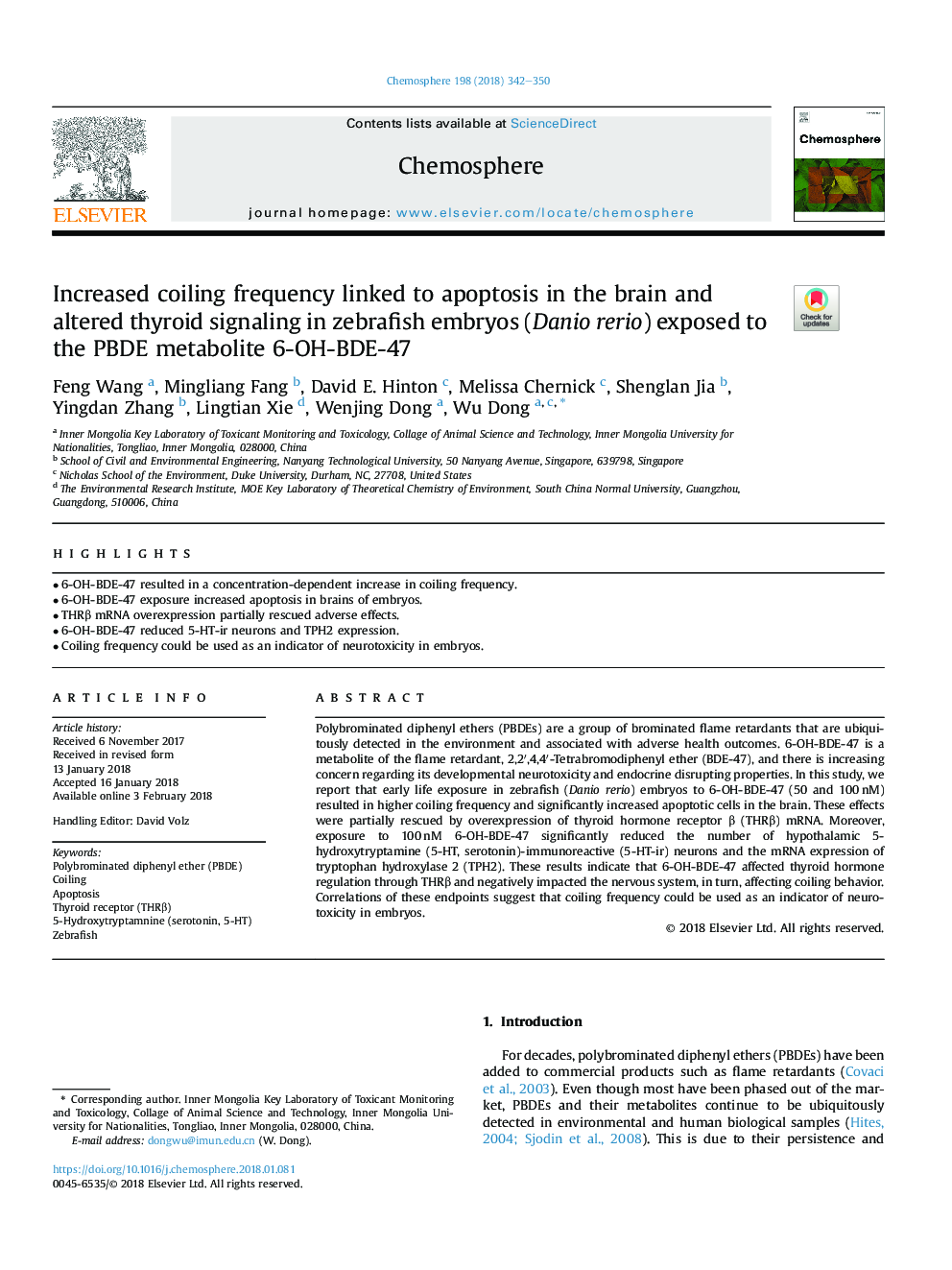| Article ID | Journal | Published Year | Pages | File Type |
|---|---|---|---|---|
| 8851898 | Chemosphere | 2018 | 9 Pages |
Abstract
Polybrominated diphenyl ethers (PBDEs) are a group of brominated flame retardants that are ubiquitously detected in the environment and associated with adverse health outcomes. 6-OH-BDE-47 is a metabolite of the flame retardant, 2,2â²,4,4â²-Tetrabromodiphenyl ether (BDE-47), and there is increasing concern regarding its developmental neurotoxicity and endocrine disrupting properties. In this study, we report that early life exposure in zebrafish (Danio rerio) embryos to 6-OH-BDE-47 (50 and 100â¯nM) resulted in higher coiling frequency and significantly increased apoptotic cells in the brain. These effects were partially rescued by overexpression of thyroid hormone receptor β (THRβ) mRNA. Moreover, exposure to 100â¯nM 6-OH-BDE-47 significantly reduced the number of hypothalamic 5-hydroxytryptamine (5-HT, serotonin)-immunoreactive (5-HT-ir) neurons and the mRNA expression of tryptophan hydroxylase 2 (TPH2). These results indicate that 6-OH-BDE-47 affected thyroid hormone regulation through THRβ and negatively impacted the nervous system, in turn, affecting coiling behavior. Correlations of these endpoints suggest that coiling frequency could be used as an indicator of neurotoxicity in embryos.
Related Topics
Life Sciences
Environmental Science
Environmental Chemistry
Authors
Feng Wang, Mingliang Fang, David E. Hinton, Melissa Chernick, Shenglan Jia, Yingdan Zhang, Lingtian Xie, Wenjing Dong, Wu Dong,
